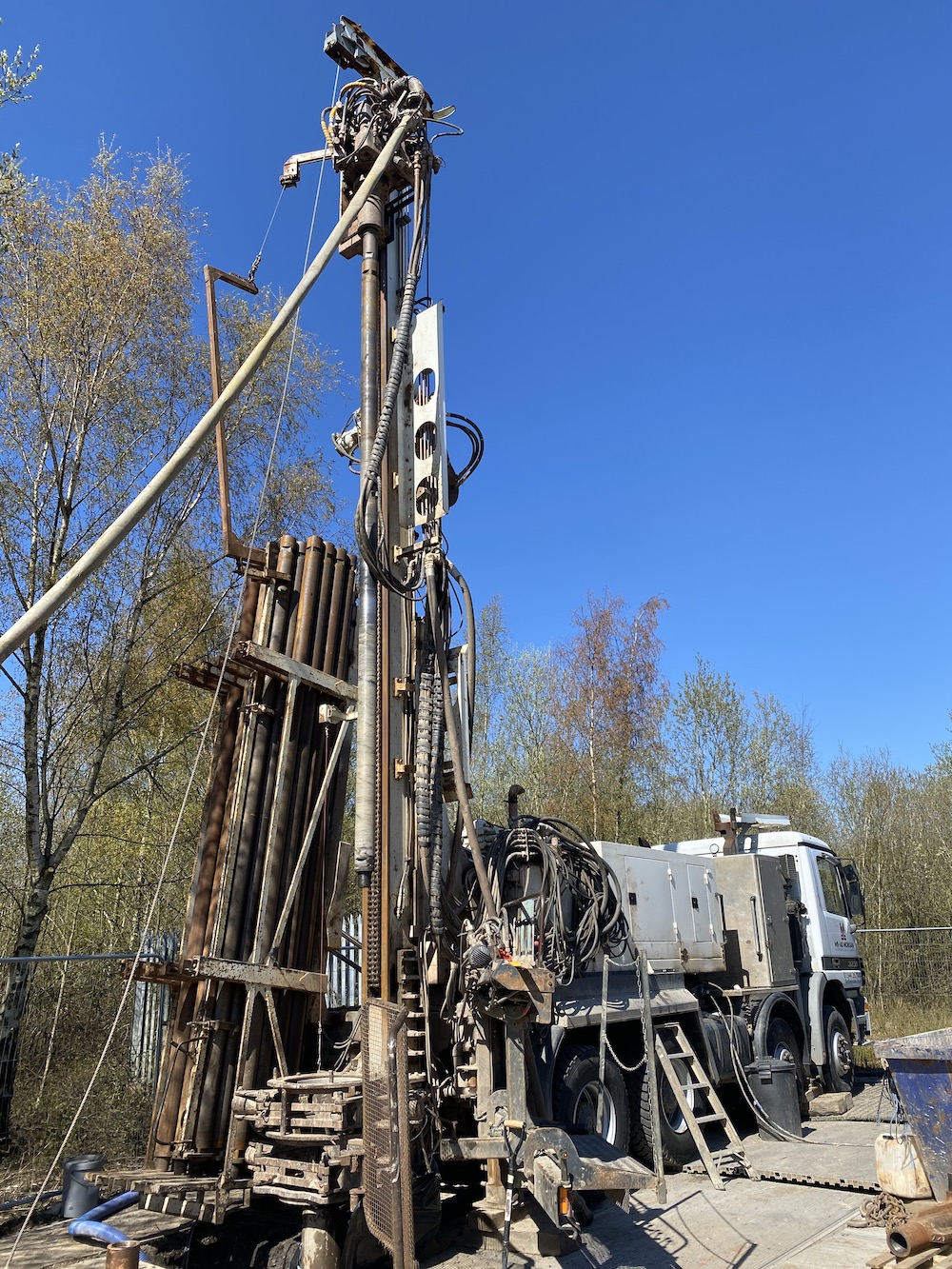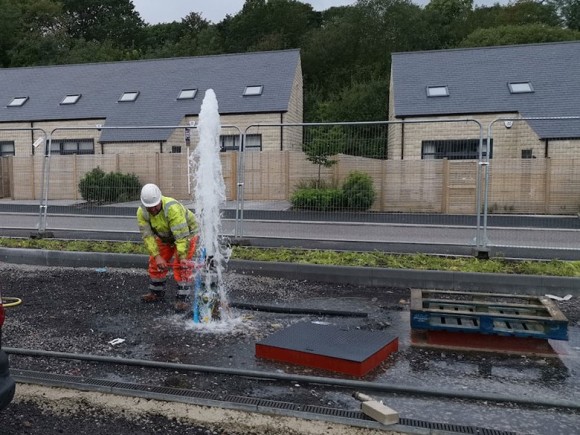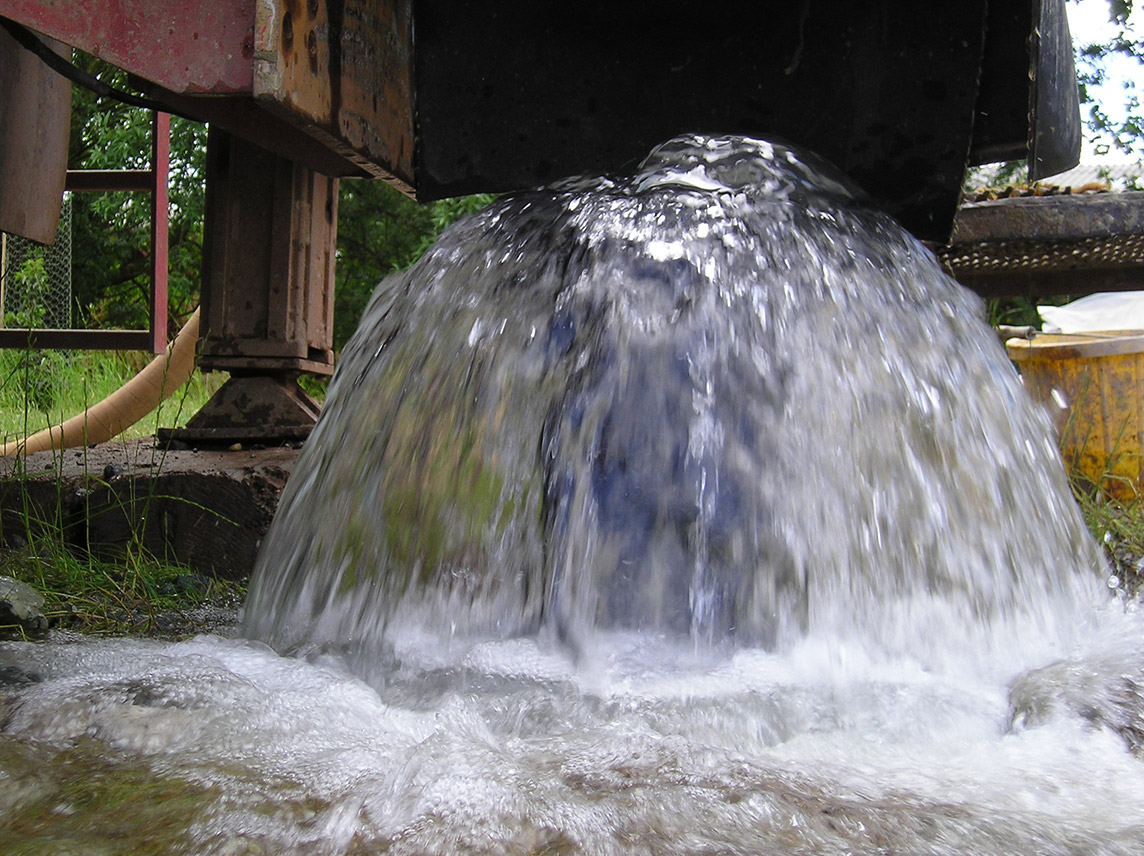Water borehole drilling frequently asked questions
Can I have my own water supply? Can I sell water from my farm? How much does drilling a borehole cost? Do you guarantee to find water? Your borehole drilling and installation FAQs answered!
Do I need a water borehole installation?
If you cannot connect to mains water, the answer to this question is obviously yes!
However, even those people with access to the mains sometimes prefer to use water that has not been processed for public supply.
Water from a borehole is not treated with chemicals; so there is no added fluoride or chlorine. In fact, most of the bottled water available from the shops comes from boreholes…many of which have been drilled by Igne.
Can I save money if I have a water borehole drilled on my land?
Yes!
Boreholes can cut water costs by up to 80%.
A cubic metre of water from a public supply can cost up to £1.70 in some areas. A million gallons can cost in excess of £7,500.
A million gallons of borehole water would cost only £230 approx.
We can help you work how how much the installation of a water borehole will save you based on your current water bill. Give us a call on 01544 267 980 and we will crunch your numbers.
What drilling permissions are needed to abstract water?
As of April 2005, abstractions of less than 20m3/day do not require licensing by the Environment Agency.
If the abstraction is greater than 20m3/day an abstraction licence is required and this is something that Igne can manage for you as the process can be a little daunting.
Drilling a borehole can take place once any permissions are in place, and we will walk you through the entire process.
How long does it take to drill for a water supply?
The steps are:
A prognosis—established by a hydrogeological survey, can normally be arranged within 14 days.
With this, Igne produces an estimate, and this takes 2 days.
Then any permissions, if required, will be applied for. This can be a long process (see Path to Licensing).
On-site work can span 10-15 days: drilling is 3 or 4 days, and then pipe work and cables need to be installed, the submersible pump placed in the borehole and tested, pumping to clear the supply.
Water is then sent to the laboratory to verify purity. This is likely to take two to three weeks in all.
So, the short answer is normally a month for non-licensable supplies.
The good news is that, as Igne has a complete service in-house, it will handle your entire project.
Is drilling a borehole messy?
To drill a borehole material removed has to find its way to the surface. In most situations we initially drill ‘dry’, and this produces dust.
When water is found, muddy slurry emerges from the hole.
We work carefully, and do our very best to minimise mess.
In sensitive sites we can use our re-circulation equipment to separate the particles from the fluids, if this method is employed the drill site can be kept very clean.
We maintained a clean drilling site for the home of cricket, Lord's for leading soft drink manufacturer Coca-Cola - and can do the same for you.
If we do make a mess, we always clean up and make good.
We have a septic tank sewerage system, is there a contamination risk with a water borehole?
There are a number of situations that can be encountered that are not helpful when planning a borehole; these include septic tanks, silage and run-off from buildings.
By careful siting of the borehole, and if possible drilling up gradient from the hazard, Igne can eliminate many problems.
The rest comes down to how the borehole is constructed and sealed. Always, the company’s aim is to engineer-out problems.
Will my water borehole need a pump?
Usually, yes.
In most cases a submersible electrically operated pump is located at the bottom of the borehole to bring water to the surface.
However, if the underground supply is under pressure, this creates an artesian well where water simply flows out. Such a supply does not require a pump.
How reliable is a submersible pump?
Igne only installs high-specification equipment.
Manufacturers state that the pump has a 10-year design life, and they are very reliable.
A number of operational factors have an influence, for example low mains voltage, or aggressive water which is exceptionally acid or alkaline.
But replacing a pump is normally a straightforward process — small domestic type pumps are suspended on a nylon rope to enable it to be brought to the surface.
The Morgan’s team reckons that a changeover time will usually take them around 3 hours on-site.
It is strongly recommended that you take out a Igne maintenance contract — this includes annual testing of your pump’s performance. You also benefit from a priority service, discount on parts and labour, and lower callout charges in the event of an emergency.
For a small additional fee you can also have a regular water analysis survey.
How deep will you be drilling my borehole?
The average range is 30-60 metres, although the Morgan’s team do sometimes drill to 250 metres or more if required.
What size will the borehole be?
Holes drilled are between 100 and 500mm diameter.
A normal domestic borehole will be drilled at 200mm diameter, with a 103mm casing and screen being installed throughout the entire depth.
This meets best practice industry standards.
The installation is carefully sealed (grouted) from ground level into rock-head to ensure that surface pollutants and contaminants cannot enter the system.
What is the life of a borehole, and can an existing well be serviced or repaired?
A new borehole, installed to a high standard, and with modern materials such as PVC and stainless steel should last a lifetime.
Difficulties can arise particularly with old boreholes where the use of steel pipe work often causes corrosion difficulties.
And where mild steel is used there can be encrustation and premature failure.
Careful design eliminates many problems at source. For example, the hallmark of a good borehole is that the velocity of water entering through the screen travels as slowly as possible.
The problem being addressed is that water that is moving rapidly is likely to drag in sediment and debris, which can cause the migration of silts and sand and again this can result in premature pump failure.
Also, fast-moving water can abrade the screen.
Some contractors create their own screens by drilling holes or angle-grinding slots in the screen material. It saves on cost, but this is false economy, and is likely to create future problems. For this reason the Morgan’s team use proprietary screens that are factory prepared and which are scientifically designed to minimise entrance velocities whilst giving the maximum open area.
Where sediment builds up, the company is normally able to clear it by using its air lift system.
With a Igne borehole, you can be sure you have the best design and materials and that construction methods will engineer-out problems.
Do you find water by dowsing?
Igne takes a scientific approach to finding water; a hydrogeological survey is the essential first step.
Do I get a specification of what work will be conducted?
Yes, a Igne estimate will itemise a full specification.
All materials used are fully approved by the Water Research Council and/or the Drinking Water Inspectorate.
What is the first step in the water borehole process?
A hydrogeologist’s survey, or borehole prognosis is essential, as it provides an indication of the underlying geology — showing the nature of the ground to be drilled, and the likely depth at which water will be found.
The estimate for drilling is based on this prognosis and this complies with best practice as advised by the Well Drillers Association.
For information about an independent hydrogeological survey contact our team.
Is the quality and quantity of water guaranteed?
There is always an inherent risk and in managing this risk the cornerstone is always to obtain as much information as possible prior to committing to a drilling programme, hence why the Morgan’s team always recommends that a borehole prognosis be obtained.
Whilst this is not a guarantee of success, it can highlight risk at an early stage and allow an informed decision to be made.
For commercial requirements where very high volumes are required, it may be necessary to drill a test borehole to assess performance. The rate at which water can be abstracted is governed by the subterranean aquifer system (an aquifer is a deposit of rock containing water that can supply wells).
There is always an element of risk that there is no water to be found, and this needs to be understood and managed.
Is water treatment necessary?
Water must be potable i.e., of safe, drinkable quality.
Any supply that is used for human and animal consumption will be analysed for water quality prior to being put into service.
Irrespective of the water analysis results, Igne always installs a pre-filter and a UV system to sterilise the water.
Should the supply require further treatment, Igne has the capacity to source and install.
If the water is turbid—muddy or cloudy with suspended particles—in-line filters will remove the problem to provide you with good clear water.
How will my borehole supply compare with mains water?
As far as the supply itself is concerned, water is pumped from the borehole at a constant mains pressure, typically 2-4 bars.
With an adequate supply, there is no requirement for storage tanks. The pump supplies water on demand, and a pressure-operated switch cuts off its electricity when it is not working, to ensure economic running.
Igne runs pipework to your building exactly as a rising mains supply would be connected, so in general your water is a fit and forget installation.
What happens if I have both mains and borehole water?
Interconnection with existing mains water supplies is possible.
Current water supply regulations dictate that there must be protection against backflow into a mains water system though.
This can be achieved by the following options.
- Total permanent disconnection from the mains water supply
- Complete and permanent separation of the mains water supply from the private water supply with no means of interconnection and with both supplies being clearly labelled
- An air gap system complying with Section 6 of the Water Supply (Water Fittings) Regulations 1999
Option 1 should be of no cost plus there will be an annual saving as there is no standing charge payable to the water company. You will need to check on sewage charges if connected to the mains sewer.
Option 2 will incur ongoing standing charges to the mains water company for the water meter plus the cost of any water used. Costs for plumbing alterations can only be determined upon a full survey.
Option 3 is likely to cost in the region of £1,400 for a domestic system plus the cost of installation. This option will also incur ongoing standing charges.
Igne requires a written instruction on your chosen option before proceeding with the private water supply connection.
Other articles of interest

Drilling monitoring wells into abandoned mine workings
Igne is working with Dunelm and installing a monitoring well to prevent catastrophic contamination from an abandoned coal mine.

Water abstraction licence
As of April 2005, abstractions of less than 20m3/day do not require licensing by the Environment Agency. If the abstraction is greater than 20m3/day a water abstraction licence will be required, and this is something we can manage for you as it can be a protracted affair to apply, and its complexity is often daunting.


